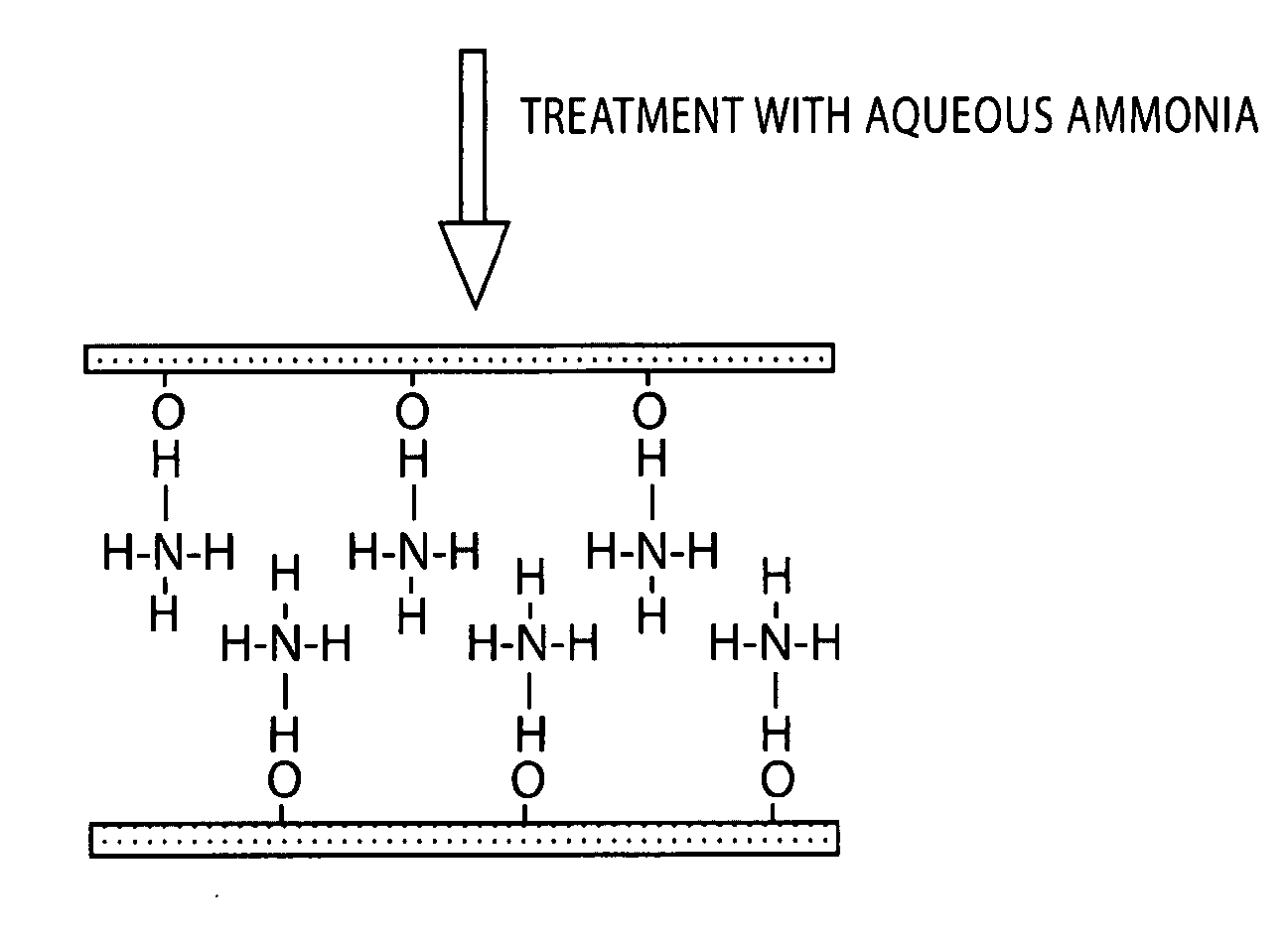Process for Producing Flaky Titanium Oxide Capable of Absorbing Visible Light
- Summary
- Abstract
- Description
- Claims
- Application Information
AI Technical Summary
Benefits of technology
Problems solved by technology
Method used
Image
Examples
Example
EXAMPLE 1
[0035] Titanium tetraisopropoxide (12.5 mmol) and isostearic acid (6.25 mmol) were mixed under a nitrogen atmosphere, and the mixture was diluted with o-xylene so that the total volume reached 15 mL. On the other hand, isostearic acid (1.25 mmol) and n-hexylamine (1.25 mmol) were mixed, and the mixture was diluted with o-xylene so that the total volume reached 10 mL to prepare a solution of a salt catalyst for promoting polycondensation. Both solutions were mixed, and the mixture was then opened to the air and stirred. Reaction was conducted by gradually allowing moisture in the air to be absorbed while the temperature was maintained at 25° C. Thus, a sol containing a titania / isostearate composite was prepared.
[0036] The shape of the product in the resulting sol was observed with a scanning electron microscope. The result showed the formation of a layered structure in which very thin titania sheets were stacked (FIG. 2). The measurement result of an IR absorption spectrum...
Example
Comparative Example 1
[0040] The heat treatment temperature in Example 1 was changed to 350° C. In this case, the specific surface area was 112 m2g−1, and a strong absorption in the visible light region was also observed (FIG. 5a). However, the degree of crystallinity of anatase was lower than that in Example 1 (FIG. 4b), and the photocatalytic activity under visible light was also lower than that in Example 1 (FIG. 7a).
Example
Comparative Example 2
[0041] The heat treatment temperature in Example 1 was changed to 550° C. In this case, the specific surface area was 7 m2g−1, which was almost the same as that in Example 1. However, the introduced nitrogen was released at this heat treatment temperature, and a strong absorption in the visible light region was not observed (FIG. 5c). The crystal form was anatase (FIG. 4d), but the photocatalytic activity under visible light was lower than that in Example 1 (FIG. 7c).
PUM
| Property | Measurement | Unit |
|---|---|---|
| Temperature | aaaaa | aaaaa |
| Temperature | aaaaa | aaaaa |
| Temperature | aaaaa | aaaaa |
Abstract
Description
Claims
Application Information
 Login to view more
Login to view more - R&D Engineer
- R&D Manager
- IP Professional
- Industry Leading Data Capabilities
- Powerful AI technology
- Patent DNA Extraction
Browse by: Latest US Patents, China's latest patents, Technical Efficacy Thesaurus, Application Domain, Technology Topic.
© 2024 PatSnap. All rights reserved.Legal|Privacy policy|Modern Slavery Act Transparency Statement|Sitemap



